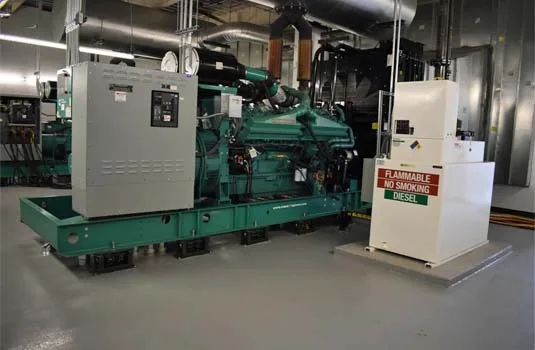Generators, like all electrical appliances, operate optimally under specific conditions. Standard temperature and pressure (STP) near sea level provide the ideal environment for maximum efficiency. Deviations from these conditions—such as high altitude, extreme temperatures, or humidity—can reduce generator output and, in severe cases, cause malfunction. Understanding these factors is crucial for ensuring reliable performance.
Environmental Factors Affecting Generator Function
Altitude
- Air Density Reduction: At higher altitudes, air pressure drops, leading to lower oxygen levels. This impacts:
- Combustion efficiency, making generator startup more challenging.
- Heat dissipation, as lower air density slows cooling processes, increasing engine temperatures.
- Overheating Risk: Sustained high temperatures due to poor cooling can cause generators to overheat and fail.
Temperature
- High Temperatures: Reduce air density, limiting oxygen available for combustion. This forces the engine to work harder while delivering reduced power output, often leading to overheating.
- Low Temperatures: Causes diesel fuel to gel, altering flow characteristics and clogging fuel filters, which can prevent startup.
Humidity
- High humidity displaces oxygen in the air with water vapor, impairing combustion. Lower oxygen levels make ignition less efficient and can result in operational challenges.
Rating Generators
Generator Sizing

Generators are designed to run at approximately 80% of their rated capacity for continuous use. During emergencies, they can operate at 100% capacity for short periods. Selecting the correct generator size and rating for specific needs ensures reliability and efficiency.
Standardized Ratings
Manufacturers provide standardized ratings to help buyers evaluate generator capacity across brands. This ensures compatibility with international standards and application requirements. For additional guidance, refer to resources on Sizing a Generator.
Derating Generators
What is Derating?
Derating adjusts a generator’s output based on non-standard environmental conditions. Factors like altitude and temperature reduce a generator’s maximum output capacity. The general derating guidelines are:
- Gasoline, Diesel, or Liquid Propane Generators: Reduce output by 2–3% for every 1,000 feet above sea level.
- Natural Gas Generators: Reduce output by approximately 5% for every 1,000 feet above sea level.
Why Derate?
- To avoid overloading the generator in less-than-ideal conditions.
- To ensure reliable performance and longevity.
Example Calculation
For a 100 kW diesel generator at 5,000 feet:
- Output Reduction: 5 × 2–3% = 10–15%
- New Output: 85–90 kW
Fuel Problems in Low Temperatures
Gelling of Diesel Fuel

- Cause: Paraffin in diesel crystallizes at low temperatures, clogging fuel filters and disrupting flow.
- Solution:
- Winterizing: Mix commercial diesel with refined fuel to reduce paraffin content.
- Anti-Gelling Additives: Prevent crystallization and improve flow. Some additives also unclog filters.
Load Considerations
Optimal Load
- Generators perform best at 80% of their capacity for continuous use.
- In emergencies, they can handle 100% load without reducing lifespan, provided proper maintenance is performed.
Maintenance and Best Practices
Regular Maintenance
- Routine inspections and servicing extend the generator’s lifespan.
- Address issues like clogged fuel filters, improper derating, or poor fuel quality promptly.
Professional Assistance
- Consult trained technicians or experienced contractors for complex modifications.
- This ensures safety, reliability, and optimal performance.
Generators are designed to operate under standard conditions for maximum efficiency. Environmental factors such as altitude, temperature, and humidity can significantly impact performance. By properly derating and maintaining your generator, you can ensure reliable operation even in challenging environments. Additionally, fuel management—such as winterizing diesel or using anti-gelling additives—is essential in cold climates. Always seek professional guidance for modifications and maintenance to safeguard your investment and maintain peak performance.